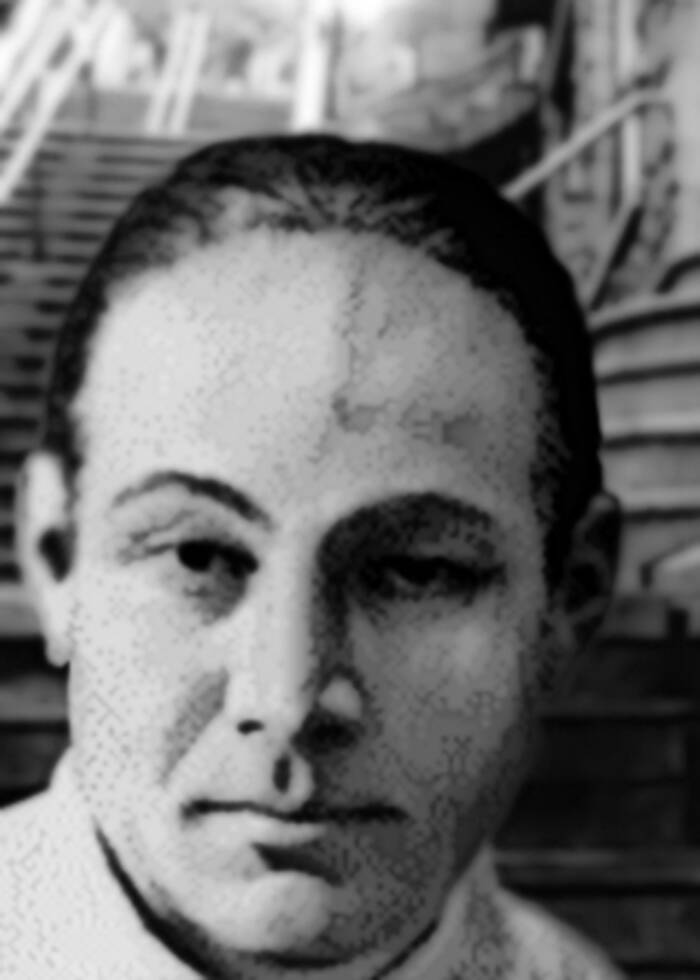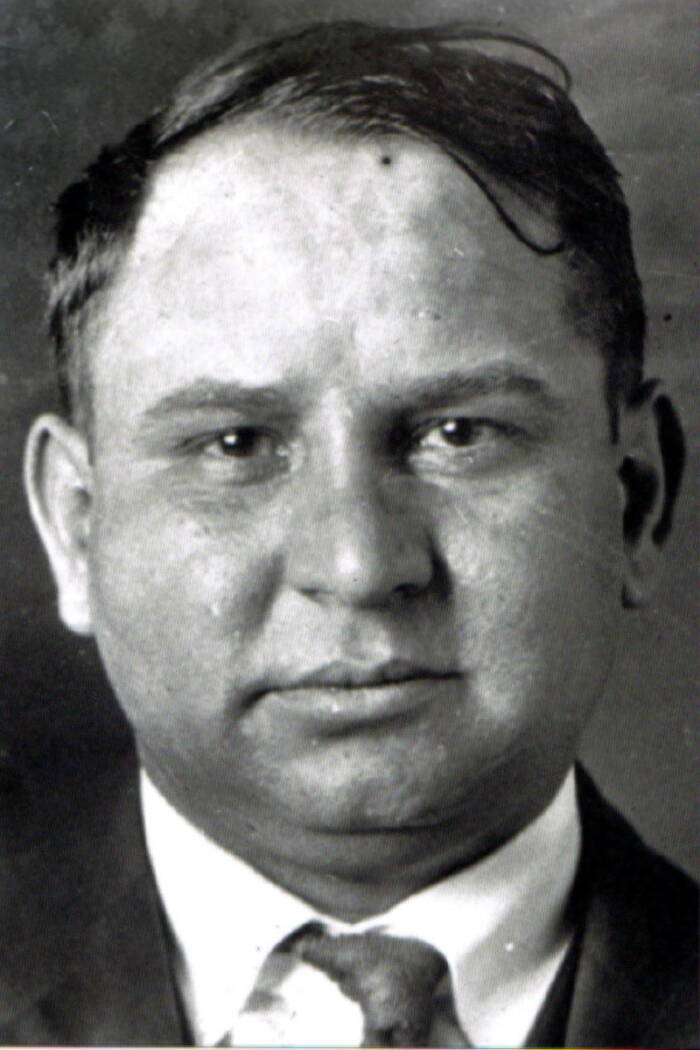After defeating Joe Masseria in the Castellammarese War, Salvatore "Little Caesar" Maranzano declared himself the "boss of all bosses" and reorganized the mob into the Five Families — but his reign would soon come to a bloody end.

Wikimedia CommonsA reconstruction of Salvatore Maranzano’s face.
Salvatore Maranzano didn’t dream of becoming a Mafioso back when he was a small boy in Sicily — let alone the head of the most powerful crime organization in America. No, he apparently dreamed of joining a much older order of brothers: the Catholic priesthood.
Instead, he wound up rising to dizzying heights in New York’s criminal underworld, where he tried to seize power and lead like his historical hero, Julius Caesar. Maranzano so admired the Roman dictator that he earned the nickname “Little Caesar.”
But before this “Little Caesar” shaped the American Mafia as we know it and crowned himself boss of all of New York City’s mob bosses, Salvatore Maranzano first made his name in crime back home in Sicily.
Salvatore Maranzano’s Journey From Aspiring Priest To Mafioso
Salvatore Maranzano was born in 1868 in Castellammare del Golfo, Sicily. As a young boy growing up in Italy in the late 19th century, Maranzano dreamed of one day becoming a priest. Plans change, however, and Maranzano soon found himself embroiled in the Italian mob in his homeland.
Obsessed with the Roman Empire, Maranzano had a deep admiration for Julius Caesar — and that obsession fueled much of his ambition. Dreaming of building his own empire, he quickly rose through the Mafia ranks in Italy.
Eventually, his boss, Don Vito Ferro, decided it was time to expand their operations into America and that Salvatore Maranzano was the man for the job. So, in the 1920s, Maranzano left his homeland behind and set sail for Brooklyn, New York City.

Public DomainMaranzano’s boss, Don Vito Ferro.
There, with Prohibition in full swing, Salvatore Maranzano used his underworld knowledge to strike while the fire was still hot. He quickly established himself as a force to be reckoned with, running lucrative bootlegging, prostitution, and narcotics operations throughout the city. Eventually, he assumed control of the gang that would become the Bonanno family.
In the process, he rubbed shoulders with fellow up-and-coming gangsters like the now-infamous Charles “Lucky” Luciano, Bugsy Siegel, and Meyer Lansky. Luciano, in particular, became an important figure when the Castellammarese War broke out in 1930.
Maranzano Battles Joe Masseria In The Castellammarese War
From 1930 to 1931, Salvatore Maranzano and fellow gangster Joe Masseria engaged in a bitter power struggle over control of New York City’s criminal underground, with various other gangsters taking sides with either man. Now known as the Castellammarese War, the bloody dispute left dozens of mobsters dead.
The war only ended when Luciano, then Masseria’s right-hand man, betrayed his boss in 1931, striking a secret deal with Maranzano to have him killed. In exchange, Maranzano promised to give Luciano control over Masseria’s rackets.

Public DomainJoe Masseria, Maranzano’s rival.
As the New York Times reported, the hit occurred on April 15, 1931. Masseria was enjoying lunch and playing cards at the Nuova Villa Tammaro restaurant in Coney Island when five bullets brought him down. His body was found in a halo of cards, with the ace of spades clutched in his right hand.
With Masseria out of the way, Salvatore Maranzano was free to seize control of the Mafia, declaring himself the capo di tutti capi — the “boss of all bosses.”

Bettmann/Getty ImagesThe body of Joe Masseria, ace of spades in hand, lies on the floor of the Nuova Villa Tammaro restaurant in Brooklyn on April 15, 1931.
Salvatore Maranzano Creates A New American Mafia
As capo di tutti capi, Salvatore Maranzano reorganized the Italian mob into the Five Families, each with its own boss, underboss, caporegime, and soldiers. This structure was reportedly based on the Roman military chain of command. Under this new system, the families were expected to respect each other’s territories and handle disputes diplomatically.
In addition to Maranzano himself, the families were headed by Luciano, Joe Profaci, Tommy Gagliano, and Vincent Mangano. Official members of the families — “made men” — were only to be full-blooded Italian, but lower-level associates could come from any background.
In Maranzano’s mind, he had finally established his own empire, molding himself in the image of his hero, Julius Caesar.
Unfortunately, when Salvatore Maranzano declared himself the capo di tutti capi, he had signed his own death sentence. In his attempt to assert total control over the Five Families, he made it clear that he viewed himself as the Mafia’s one true leader — an assessment that others, Luciano included, would disagree with.
What’s more, despite his attempts at modernizing the mob, many of Maranzano’s subordinates viewed him as a “Mustache Pete” — a term for an old guard mobster stuck in the traditional ways of doing things. A new American Mafia required a new approach, and many of Maranzano’s minions believed he wasn’t cut out for it.
And in a bitterly ironic twist, it was Salvatore Maranzano’s own Brutus, Lucky Luciano, who finally put an end to the tyrant’s rule.

Wikimedia CommonsCharles “Lucky” Luciano poses for a mugshot in New York. 1931.
The Murder Of Salvatore “Little Caesar” Maranzano
When Salvatore Maranzano rose to power, he appointed Lucky Luciano his lieutenant. However, Maranzano soon came to view the ambitious mobster as a threat. Fearing Luciano would betray him as he had Masseria, Maranzano hired Irish gangster Vincent “Mad Dog” Coll to take Luciano out.
But Luciano was tipped off about this plot — and vowed to get to Maranzano first. Establishing partnerships with Jewish mobsters like Lansky and Siegel, he devised a plan to assassinate the capo di tutti capi. And when Maranzano called Luciano and Vito Genovese to meet with him on Sept. 10, 1931, Luciano figured the time was now or never.
Rather than attend the meeting himself, Luciano coordinated an attack with Siegel and Lansky, sending a group of Jewish mobsters who were unknown to Salvatore Maranzano to meet him instead. Posing as government agents, they crept into Maranzano’s New York City office, disarmed his bodyguards, then stabbed and shot the Mafia boss several times to guarantee he was dead.

CultureNOWTo this day, the only verified photos of Salvatore Maranzano are the ones of his bloody corpse.
After Maranzano’s assassination, most Mafia members expected Luciano to follow in his predecessor’s footsteps and declare himself the boss of all bosses.
However, Luciano, being a Young Turk, saw a different path forward. He did away with the title altogether, knowing full well that putting himself in such a position would only open him up to the same scrutiny that had put a target on Maranzano’s back. Luciano went on to establish The Commission as a unified governing body to oversee organized crime operations and prevent further wars from breaking out.
Ultimately, Salvatore Maranzano’s reign as the head of the American Mafia was short-lived. But for someone who positioned himself as the spiritual successor to Julius Caesar, his story had come to an oddly fitting end.
After this look at Salvatore Maranzano, discover some of the most astounding Al Capone facts and John Gotti facts you’ll ever read.





